Aperture Desk Job
LQ: 8.8
Recommended Age: 8+
Skills Used: Focus, Working Memory, Reading
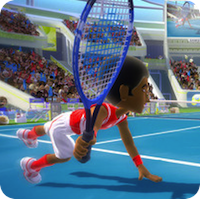
In Kinect Sports Season Two: Tennis, the player interacts with Microsoft Kinect to mimic playing tennis. Using his hands like a racket, the player will volley the ball back and forth across the net against an opponent. If the ball is hit to the left of the player, he will need to use a back hand swing to return it. If hit to the right, the player uses a forehand swing. If the ball is served into the air, the player can do a downward motion to spike it. The player with the most points at the end of a round will earn a ‘game point’. The first player to collect either 3 or 5 game points (depending on the settings) will win the match. This game is recommended for kids ages 7 and up, as there is no violence and the game is easy to learn and play.
Getting started and then maintaining attention and effort to tasks.
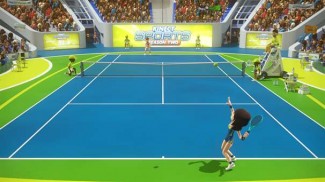 In order to score, the player will need to keep a close eye on the ball, paying close attention in order to correctly time swings and return the ball at the right moment. The window of opportunity to hit the ball is fairly small, so the player will need to follow along closely, and swing when the ball enters his zone of impact. Swinging too early or too late will cause the player to miss, likely resulting in the opponent earning a point. The key to scoring points -- and preventing the opponent from winning -- is to look for the right moment to connect and time your swing accordingly.
In order to score, the player will need to keep a close eye on the ball, paying close attention in order to correctly time swings and return the ball at the right moment. The window of opportunity to hit the ball is fairly small, so the player will need to follow along closely, and swing when the ball enters his zone of impact. Swinging too early or too late will cause the player to miss, likely resulting in the opponent earning a point. The key to scoring points -- and preventing the opponent from winning -- is to look for the right moment to connect and time your swing accordingly.
Adapting and adjusting to changing conditions and expectations.
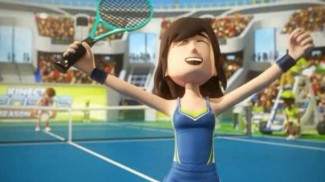 The player will need to mix up his use of both backhand and forehand swings when returning the ball, watching his opponent's moves and quickly deciding upon each upcoming swing. If the opponent hits the ball to the player's left, he'll need to quickly get his hand into position for a backhand. If the ball is served to the player's right side, he will want to get his hand ready for a forehand swing. The amount of time the player has to decide each swing is minute, so he must be able to quickly follow his opponent and think fast. By changing up swings and periodically throwing in powerful spikes, the player can throw off the opponent. Rigid players will have trouble quickly responding to the on-screen action and may not perform the required swings in time.
The player will need to mix up his use of both backhand and forehand swings when returning the ball, watching his opponent's moves and quickly deciding upon each upcoming swing. If the opponent hits the ball to the player's left, he'll need to quickly get his hand into position for a backhand. If the ball is served to the player's right side, he will want to get his hand ready for a forehand swing. The amount of time the player has to decide each swing is minute, so he must be able to quickly follow his opponent and think fast. By changing up swings and periodically throwing in powerful spikes, the player can throw off the opponent. Rigid players will have trouble quickly responding to the on-screen action and may not perform the required swings in time.
Use this PlayTogether guide to learn how you can help your child turn Kinect Sports Season Two: Tennis play time into a positive learning and relationship-building experience. To learn more about why playing games with your children is so important, check out our Science of Play page!
Take a minute to talk with your child about how the Focus and Flexibility thinking skills work, and why they are important for success in school and at home.
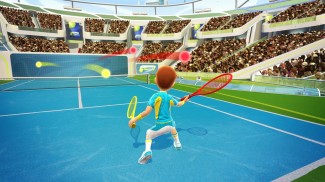 Kinect Sports Season Two: Tennis can be experienced as both a single, and multiplayer game, so the best way to play with your child is to play competitively. Because Kinect Sports Season Two: Tennis lets players enjoy the action simultaneously, both players can work together to meet the gameplay goals listed below.
Kinect Sports Season Two: Tennis can be experienced as both a single, and multiplayer game, so the best way to play with your child is to play competitively. Because Kinect Sports Season Two: Tennis lets players enjoy the action simultaneously, both players can work together to meet the gameplay goals listed below.
Gameplay Goals:
After you have completed the gameplay goals above, take a minute to pause the game and talk with your child about how the game is exercising your Focus and Flexibility skills.
Our Make it Work activities are designed to transform your child’s gameplay into real-world improvements in thinking and academic skills. If you’re just getting started with LearningWorks For Kids, we suggest you try them all to find which are the best for you and your child.
Read over our Focus and Flexibility pages, and then take some time to introduce these thinking skills to your child.
Explain That:
U se competition to sustain focus. For instance, challenge your child to a race. Tell her to see whether she can fully complete a portion of her homework before you finish putting away the groceries after shopping. If your child has a competitive nature, encourage her to come up with strategies for competing against herself or others. Engage siblings, friends or other caregivers in these friendly contests.
se competition to sustain focus. For instance, challenge your child to a race. Tell her to see whether she can fully complete a portion of her homework before you finish putting away the groceries after shopping. If your child has a competitive nature, encourage her to come up with strategies for competing against herself or others. Engage siblings, friends or other caregivers in these friendly contests.
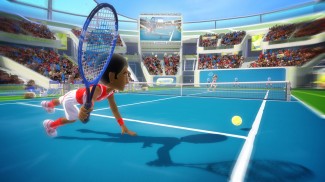 Play games that change tempo. One example of this is the game of Hide and Seek where the players each get alternating chances to run around and be quietly still. Games such as this, that involve taking turns and shifting the order of turns can help to build flexibility skills. These suggestions are particularly useful for children who have difficulty with transitions or who tend to have problems regulating their behavior.
Play games that change tempo. One example of this is the game of Hide and Seek where the players each get alternating chances to run around and be quietly still. Games such as this, that involve taking turns and shifting the order of turns can help to build flexibility skills. These suggestions are particularly useful for children who have difficulty with transitions or who tend to have problems regulating their behavior.
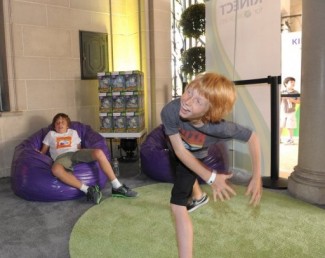 Exercise can be a powerful tool for boosting focus and attention in children with ADHD. Physical activity can positively affect brain chemistry through the production of BDNF (brain-derived neurotrophic factors), proteins in the brain that can help enhance memory and focus. Active games like Kinect Sports Season Two: Tennis offer great outlets for physical exercise, as they are engaging enough to keep children motivated towards exercise, helping boost key cognitive skills and executive functions.
Exercise can be a powerful tool for boosting focus and attention in children with ADHD. Physical activity can positively affect brain chemistry through the production of BDNF (brain-derived neurotrophic factors), proteins in the brain that can help enhance memory and focus. Active games like Kinect Sports Season Two: Tennis offer great outlets for physical exercise, as they are engaging enough to keep children motivated towards exercise, helping boost key cognitive skills and executive functions.
All membership plans come with full access to our entire suite of tools learning guides, and resources. Here are a few of the ones we think you’ll like the most: